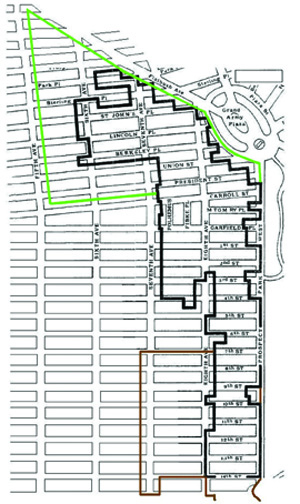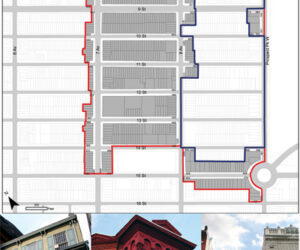Many residents assume Park Slope to be fully landmark-protected, with its large expanse of 19th-century brownstones, apartment buildings, carriage houses, and frame buildings. In reality, only about a quarter of the neighborhood is landmarked. Outside the boundaries of the Park Slope Historic District, buildings can be demolished, altered in inappropriate ways, or stripped of their architectural features without constraint.

The Civic Council is committed to redressing this oversight by getting protection extended to the many blocks that meet the criteria for historically and architecturally significant buildings and districts.
The current Park Slope Historic District was established in the early 1970s. The Civic Council was the driving force behind this initiative, which galvanized the revival of the neighborhood.
The current effort began in 2007, when a group of Civic Council trustees and members took action after growing concerned about the assaults on the neighborhood’s historical and architectural integrity, both real and threatened. These dangers stemmed from Atlantic Yards, the upzoning of Fourth Avenue and of Park Slope’s two major commercial thoroughfares, and new developments springing up like weeds in the South Slope. Seemingly in the blink of an eye, the solidity of our streetscape, embodied in bricks and brownstone, seemed fragile and ephemeral. Is that hyperbole? Just take a look at Greenpoint, Williamsburg, and neighborhoods throughout the city to witness their transformation in the last decade.
The Civic Council championed the expansion effort at our 2009 annual forum. Under the auspices of the Historic District Expansion Committee, we submitted a proposed master plan in May 2009 to the city’s Landmarks Preservation Commission (LPC) outlining a multiphase expansion of the district.
The designation of nearly 600 buildings in the South Slope outlined in the first phase is imminent. As this issue goes to press, the LPC is preparing the voluminous designation report that will be the basis for its upcoming vote. This phase will protect blocks starting at the Park Slope Armory on 14th Street and Seventh Street, encompassing both sides of Seventh Avenue, and extending to the existing historic district just east of Eighth Avenue. The entrance to Park Slope at Bartel Pritchard Square will also be protected.
As the second phase of the district’s expansion, the Civic Council has set its sights on protecting another 600–800 buildings in the North Slope. Buildings north of Carroll Street and above Fifth Avenue and extending north to near Flatbush Avenue would be included. This is the original part of Park Slope to be developed, but it’s also expected to change dramatically from Atlantic Yards.

In recent months, volunteers have fanned out to inform owners of these buildings and solicit their support. We anticipate that the LPC will launch a formal review of this phase next year, and will invite the owners to hear about what it means to be in a historic district. At that meeting, LPC officials will present their proposed boundaries of this expansion and answer questions. Subsequent expansion phases will focus on protecting the blocks above Fifth Avenue extending from near Carroll Street to blocks in the South Slope. In addition to retaining the small scale of our Seventh Avenue commercial strip, it will protect the unbroken streetscapes of many side streets and Sixth Avenue.
The Historic District Expansion Committee meets regularly to discuss our strategies for expansion and to enlist volunteers in our outreach efforts. These volunteers include homeowners and tenants, and hail from the South, Central, and North Slope. Our efforts require considerable volunteer help.
Find out how you can get involved: E-mail us at historic.district@parkslopeciviccouncil.org.
— Peter Bray chairs the Civic Council’s Historic District Expansion Committee.
Photos: David Herman
from the Fall 2011 Civic News

